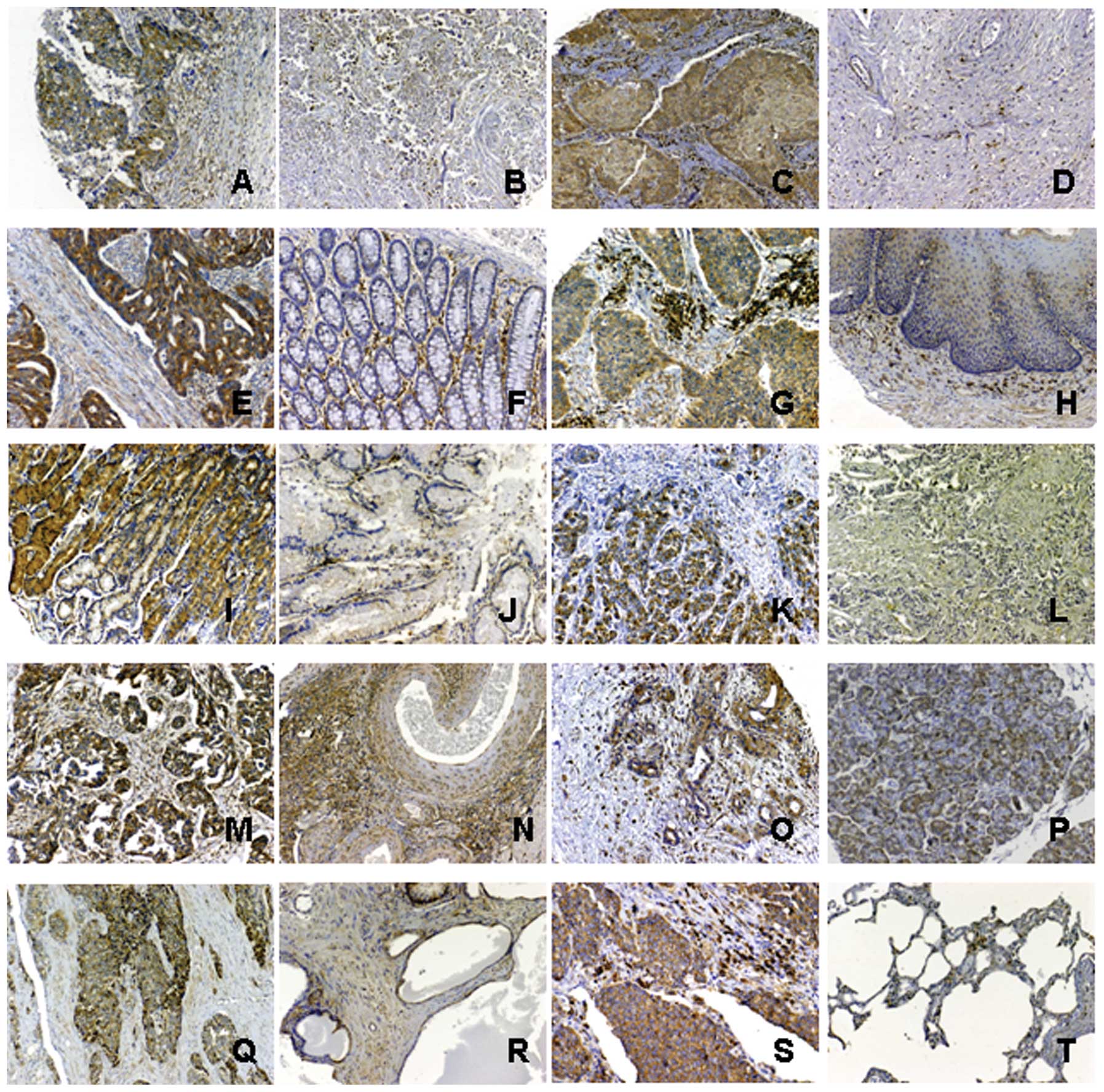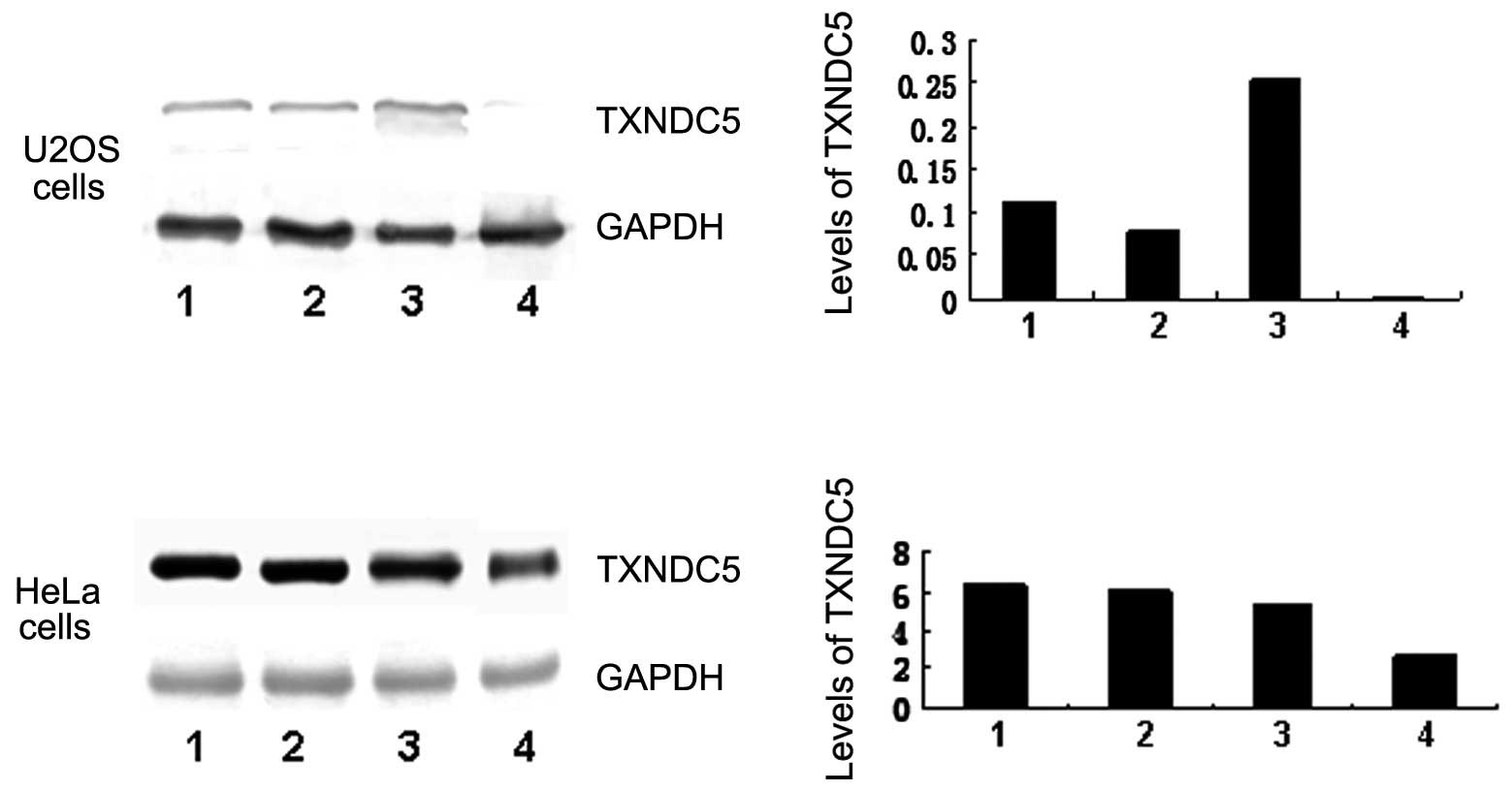Investigating a pathogenic role for TXNDC5 in tumors
- Authors:
- Published online on: October 3, 2013 https://doi.org/10.3892/ijo.2013.2123
- Pages: 1871-1884
Metrics: Total
Views: 0 (Spandidos Publications: | PMC Statistics: )
Total PDF Downloads: 0 (Spandidos Publications: | PMC Statistics: )
Abstract
The expression of TXNDC5, which is induced by hypoxia, stimulates cell proliferation and angiogenesis. The increased cell proliferation, angiogenesis and hypoxia are main features of tumor tissues. The present study aimed to characterize the expression of TXNDC5 in various tumor types and to investigate the role of TXNDC5 in the growth, proliferation and migration of tumor cells. The study also determined susceptibility of TXNDC5 gene on tumor risk. The expression of TXNDC5 in tumor tissues was determined by immunohistochemistry using a tissue array that contained various types of tumor tissues. The expression levels of TXNDC5 in tumor tissues and healthy tissues were quantitatively analyzed using western blotting. Furthermore, HeLa cells and U2OS cells were treated with anti-TXNDC5 siRNA to knockdown the expression levels of TXNDC5 to study its role in cell proliferation and migration. The cell proliferation and migration of the transfected tumor cells were determined by MTT and Transwell migration assays, respectively. Ninety-six tag SNPs across the TXNDC5 locus were genotyped using custom‑designed Illumina 384-SNP VeraCode microarrays. Our immunohistochemical staining revealed significant expression of TXNDC5 in breast invasive ductal carcinomas, cervical squamous cell carcinomas, esophageal squamous cell carcinomas, gastric carcinomas, hepatocellular carcinomas, ovarian papillary serous carcinomas, prostate cancers and undifferentiated cell carcinomas of the lung. Western blot analysis also detected significantly higher TXNDC5 expression in tumor tissues of breast cancers, gastric adenocarcinomas and rectal cancers compared to the adjacent healthy tissues. Decreased growth and invasive potential were observed in cultured HeLa cells and U2OS cells when TXNDC5 gene expression was knocked down. The case-control analysis showed a significant difference in allele frequency and genotype frequency for rs9505298, rs7771314, rs2815128, rs13210097 and rs9392182 between cervical carcinoma, esophageal carcinoma and liver cancer patients and controls. These results suggest that TXNDC5 has increased expression in many tumors that is involved in the proliferation and migration of tumor cells, acting as a tumor-enhancing gene. The study also suggests that TXNDC5 gene is susceptible to cervical carcinoma, esophageal carcinoma and liver cancer risk.














